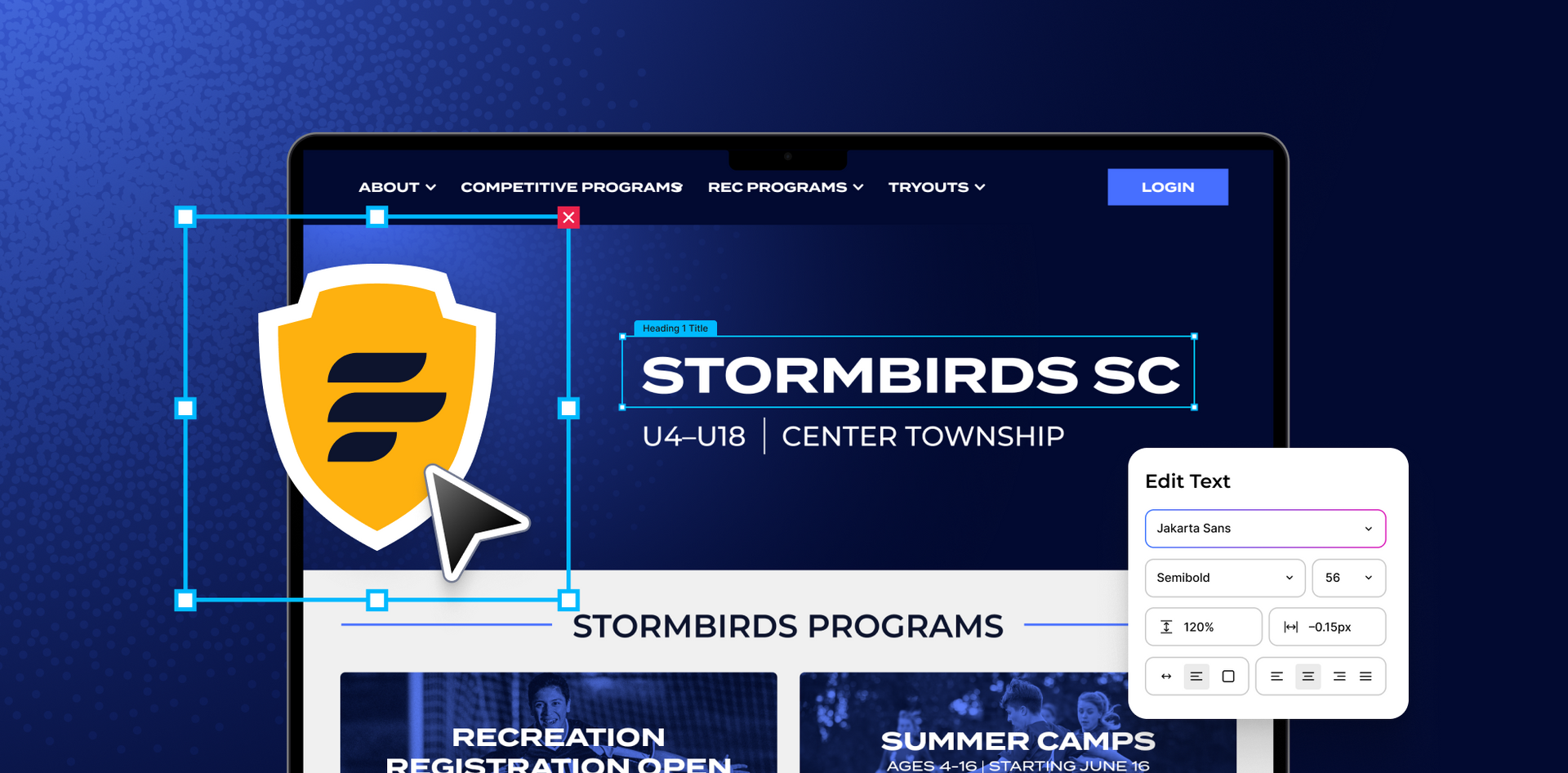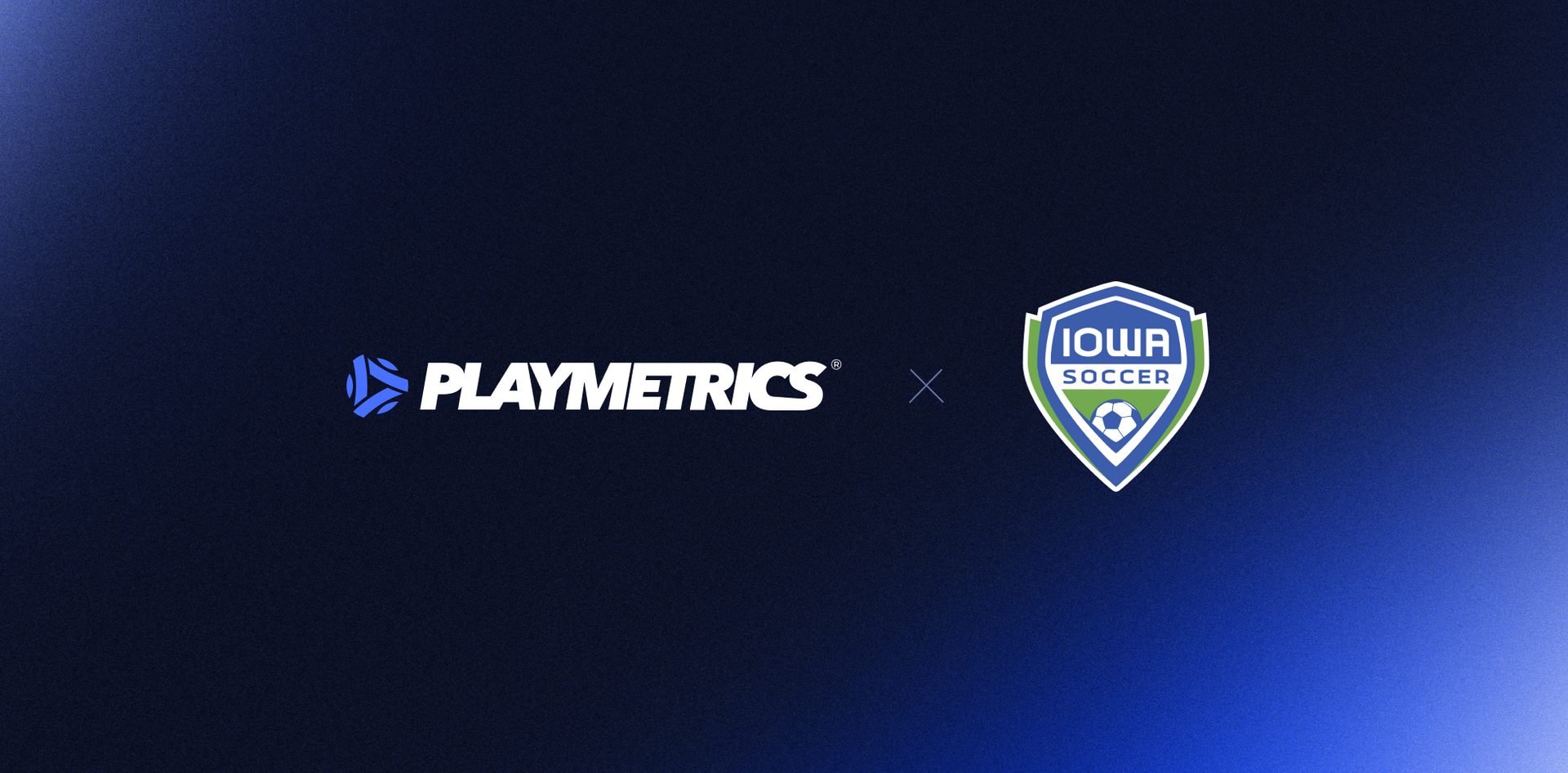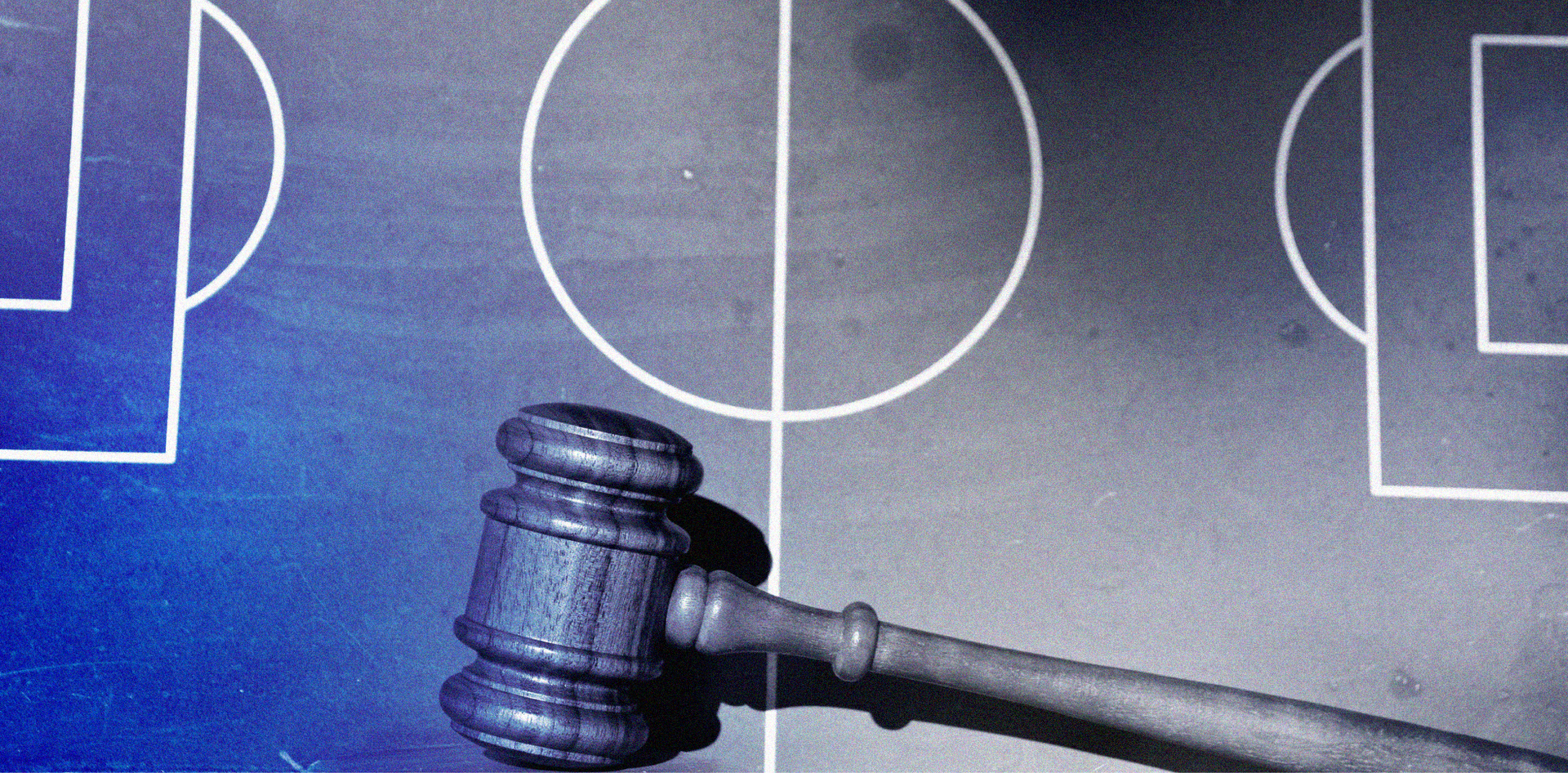Best Practices for an Impressive Youth Sports Website: Actionable Steps for Clubs & Leagues
If you think your organization’s website is just a formality, think again. From the first moment someone checks you out to the tenth time they go to register for a new season, your website quietly guides every interaction. It’s more than just a source of news and registration links; it’s one of the most important assets to your club or league. In 2025, the value of a youth sports website is greater than ever.
According to recent data,
82% of parents report having high expectations for the technology their club uses to communicate, schedule, register, and accept payments (including your site). Unfortunately, less than half are actually satisfied.
Time after time, the same errors are made by well-intentioned youth sports leaders – often rooted in misconceptions surrounding how to think about websites – and the end result falls short of expectations. Not only can this be damaging to your brand’s perception, danger lurks when it’s unclear what programs are available, how to register, or why parents should choose your club over the one across town.
By taking the time to develop a strategic and thoughtful approach to your website, your organization will be well positioned to stand out from the competition and give visitors exactly what they seek. We sat down with web developer and club marketing director Aldin Zmajevac from
Zikoba Marketing, an agency specializing in youth sports organizations, to get his take on what makes a great website. Here’s what we learned.
Five Recurring Website Myths
More often than not, a problematic website stems from either a lack of resources or knowledge. Even if you’re not able to influence the resource side, identifying these false assumptions will put you one step closer to a successful website strategy:
Myth
- Your website needs to do everything.
- Your website needs to be flashy.
- Your website needs to be custom designed.
- You don’t need to worry about accessibility on your site.
- Your work is done once your website is launched.
Let’s unpack each one in greater detail:
Myth #1: Your website needs to do everything.
Truth: Less is more. The primary need of site visitors is to get reliable information clearly and quickly without being overwhelmed by endless navigation paths or pop-ups. One practical way to streamline your site is making a list that ranks the most essential homepage information in order, allowing you to designate a proper location for the rest.
Myth #2: Your website needs to be flashy.
Truth: While there’s nothing wrong with wanting an impressive or dynamic website, too much flash quickly becomes confusing to navigate. It’s also important to consider that complex elements affect loading speeds and can be a distraction from the page’s intended goal (e.g., registering for tryouts) if not used in moderation.
Myth #3: Your website needs to be custom designed.
Truth: Custom sites come with both advantages and disadvantages. On the plus side, you (usually) get exactly what you want and can stand out more from templated youth sports sites. However, working with a developer and designer can be more costly and less flexible in regard to real-time updates. In the next section, we’ll cover how to determine if a custom site is right or not for your organization.
Myth #4: You don’t need to worry about mobile accessibility on your site.
Truth: Not everyone has a computer to view your site, and the majority of web traffic is likely happening from a mobile device. Optimizing your website for mobile is a crucial step for any organization, especially through the lens of accessibility. To accommodate special needs of site visitors, be sure to always use alt tags, high contrast with text, and captions on your videos. Not only will your visitors be better served, so will your site in regard to search engine optimization (SEO).
Myth #5: Your work is done once your website is launched.
Truth: Timely updates are essential to provide accurate information to site visitors. Any changes involving field availability, fees, camp offerings, registration links, seasonal events, and current staff should be reflected on your website as soon as possible.
Putting these misconceptions to rest will give you a clearer picture of what you want your website to accomplish. Next, it’s time to figure out
how.
Forming Your Strategy: Key Questions to Ask
Most likely, your youth sports organization already has a website. That’s not the end goal; it’s the beginning. A website’s work is never finished, and your organization should always be analyzing, optimizing, and considering next steps. Whether you’re launching a new site or revamping one that’s been around for years, start by asking the following fundamental questions:
- Who is your target audience?
Every sports organization will have both prospective and current members coming to their site, but you’ll need to dig deeper into your own unique situation. A newer club or league is focused more on introducing themselves, establishing their identity, and sharing their mission to generate interest. A more seasoned one will be looking to optimize the member experience, grow their impact in the community, or show off their accomplishments. Think about your organization’s unique position, who will be looking at your site, and the information they expect to find.
- What do you want visitors to do on your site?
The main call-to-action (CTA) for most youth sports organizations is registration. This could mean signing up for tryouts, joining a rec program, or filling out an application. Depending on the nature of your organization, there might be a variety of other ways site visitors can participate, including volunteering to be a coach, donating to a fundraiser, or RSVPing to an event. CTAs should always correlate to the page they’re on. A sponsor page should have a way to become a sponsor, a financial aid page should have a way to apply for financial aid, and so on.
- What is your current tech stack?
If your organization uses an operating system, does it include mobile communication features to give members real-time updates and team info? If not, your website may need to do more of the heavy lifting. It’s worth noting that the operating systems that offer a web builder usually have more direct integrations between the platform and your website than the ones that don’t.
- What resources do you have to dedicate to the site?
Figuring out who is in charge of the site and how much time they have to monitor it will determine if you should manage internally or through an outside developer and designer. This will require taking stock of your internal web knowledge, budget, and timeline.
Once it’s clear who is involved and how you’ll manage the site, here are some best practices to consider.
Best Practices for Your Youth Sports Website
Maintaining a successful website requires some of the same qualities as running a successful youth sports organization. By that, we mean it’s imperative to focus on the fundamentals and make every effort to provide a great experience. (In addition to working on your headers, making sure you have the right fields, adjusting to high bounces, and other puns.) Along with each best practice, we’ve included an example of a youth sports website that’s acing it.
Design - Visual design can be somewhat subjective, but it tends to be true that the “cleaner” and more streamlined your website looks, the better.
- Use your exact brand color codes for visual consistency. If you don’t know the HEX codes by heart, use an eye dropper tool to select and match colors.
- Make sure font sizes and spacing are easy to read - we’d suggest at least 16pt for body paragraphs with 1.5 line spacing.
- Remember to preview your site on mobile. If needed, reorganize page content for the mobile version so that it stacks and fits properly. (Remember, about 96% of parents register from a mobile device!)
- Example: Lake Travis Football Club
Navigation - Organize navigation by topic and use dropdowns for an intuitive user experience. Your site visitors will find their way around the site using the predetermined tabs you set in the nav bar or menu.
- Make the nav bar “sticky” on scroll — meaning site visitors will still be able to see the menu even if they’re toward the bottom of a page.
- Navigation is valuable real estate, but it can quickly become overwhelming if there are too many tabs listed. This goes back to the need for a list of your most essential site information.
- Use a high-resolution version of your club logo in the navigation bar with a transparent background. This will likely be either a PNG or SVG file.
- Example: Prime Volleyball Club
Headers - Whether you use images, text, or videos, headers serve as the eye catchers that will set the tone for the rest of the following page.
- For a header background, use images or videos that show off your culture. Think about high-quality action shots or photos of players having fun (and make sure you have permission to use them).
- Put the most important information “above the fold.” This means the content you care most about displaying should be visible without scrolling.
- Use large, bold text (2x the size of paragraph font) for headlines and a CTA button in the header for easy visibility.
- Example: South Carolina United FC
Content - This is all the “stuff” you include on your site, including words and visual assets. Draft each text section in a separate document before it goes on your site, and write thoughtfully in a way that will speak to your audience.
- Tell your organization’s story and highlight what makes you unique. Are you looking to position yourselves as prestigious and serious, casual and fun, or both? This will influence what you say and how you say it.
- Add detail whenever possible. For example, rather than just listing an age group and sign-up link, consider including the training focus for that age group, the timeline of a typical season, or other details.
- Incorporate patterns, images, and graphics that work with your branding and look sleek and sporty.
Calls-to-action (CTAs) - As we covered earlier, the goal for sports websites is typically straightforward: get registrations. Whether that means signing up for tryouts or paying to join an open program, CTAs should make it easy to participate.
- The label for a CTA button should be clear and under four or five words. (“Register now” or “Sign up for tryouts”)
- CTAs should lead directly to their destination whenever possible. If you’re taking them from your site to an operating system or registration form, remove any redundant steps from the process.
- Display CTAs in more than one place so users don’t need to hunt for them. This could look like having one in the header and one at the bottom of the page.
- Example: Southern California Blues Soccer Club
Footers - Other than the navigation bar, your footer will be the next place most site visitors look for things like contact information or quick links. Be sure to take advantage of this space without crowding in too many elements.
- Add your social media links in the footer. You want visitors to stay on your site, and putting them too high up can be an easy opportunity to stray away from your site. Plus, this will be where most viewers will look for ways to connect.
- Think about putting topics like financial aid, club policies, or the link to your fan store in the footer. This will ensure that they’re easy to find if they don’t have their own tab in navigation.
- Copyright and any privacy notice links should be displayed here.
- Example: RISE Soccer Club
FAQs - Listing out your most frequently asked questions will save your club admins from having to answer the same question over and over again. Plus, it shows that you’re willing to go the extra mile to anticipate and meet your members’ needs.
- FAQs should cover the most pertinent questions, which may include things like the team placement process, uniform ordering, or coaching assignments.
- Having a dedicated FAQ section boosts how your page ranks in search; Google often displays these answers when relevant questions are surfaced in a query.
- Think about using an accordion or other collapsible page elements to list FAQS so you can pack more information into a section. Most web builder sites will have this as a page element or “widget.”
- Example: Northern Nevada Juniors
Blog / Newsletter - This can be a great way to share recent updates and club highlights, but only if your organization has the means to update it regularly.
- News sections are a great way to give a special shoutout to a team or coach. You could also use this space to post club announcements, season recaps, or tournament results.
- If you want to display recent news on your site but don’t feel like committing to regularly writing or updating a blog, consider pulling in your social media feeds. Many web builder sites will offer this as a page widget that can easily be connected to your accounts.
- If you display a blog as a main section and it's outdated by years, it will hurt your credibility. Consider the blog section when figuring out who is involved in maintaining your site during the strategy process.
- Example: Kings Hammer Soccer Club
Sponsors - Including a dedicated sponsor section is a great way to thank your partners and display their logos proudly. This can also help with garnering new sponsorships, as brands like to be part of ongoing efforts to support the community.
- These typically work best at the bottom of pages, either in the last section of the homepage or in the footer. A scrolling gallery or static rotator adds motion.
- Ask your sponsors for a high quality logo file with a transparent background, and be sure to link to their websites.
- In select cases, a marquee sponsor like your uniform provider or parent organization can be displayed in the header.
- Example: Missoula Ski Education Foundation
Must-haves for any youth sports website
Being in the youth sports business typically means wearing many different hats. One minute you’re coaching, the next you’re working in communications, and the next you’re managing logistics. A successful website can (and should) make your life easier by centralizing everything members need. Each club or league will have its own mode of operating, but it’s non-negotiable that your website needs to:
1. Clearly communicate what your organization offers and what it doesn’t.
Consider the questions a new site visitor might have. They’ll want to know if you have competitive and recreational programs, how much it costs, where your facilities are located, and when the season starts and ends.
2. Work reliably.
Future and current members will be counting on your website to be dependable in terms of both performance and the information provided. Think about optimizing loading speeds, making sure there are no errors or dead pages, and that the mobile experience is just as smooth as desktop.
3. Showcase your club/league’s strengths and what makes you stand out.
This is permission to show off. Sharing your mission statement, club history, accomplishments, staff directory, training philosophy, and more will help tell your story and differentiate your organization from others.
4. Make joining easy.
Help your site visitors get where they need to be in as few clicks as possible. Think about basic ways to boost conversions, like having a tab in navigation for tryout registration. Actively seek feedback from members on how your site could improve, and take measures to make sure their feedback is addressed.
Closing thoughts
A great youth sports website will accomplish several things for your organization, including showcasing the results of your efforts and portraying your brand the way you want to. Not only does your site serve as your informational home base, it also houses the registration portals that funnel revenue into your business. By infusing intentionality and the best practices covered above, it’s sure to be a winner.
Recent Posts





